We are all bewitched by words. We confuse them with the real world, and try to live in the real world as if it were the world of words.
-Alan Watts

This third episode in the series has been condensed and retold from Debt: the first 5000 years by David Graeber, which is a phenomenal book and I highly recommend reading it!
We all know the story, it's arguably the most important 'creation myth' in Industrial Society. It tends to go something like this. A long time ago before we had money, people farmed and built everything with their hands. If you made shirts and pants and socks, and your neighbor Sam raised chickens, then you could trade some of your clothes for some of your neighbors chickens, and Sam wouldn't have to walk around naked anymore, and you'd have chicken soup for dinner.
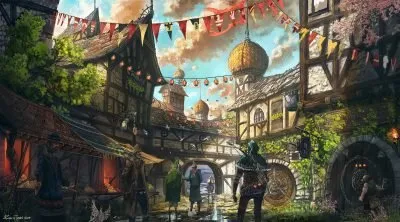
According to Economists everywhere...
Humanity simply suffered under this troublesome system for thousands and thousands of years until some brilliant person invented monetary tokens, and set us all on the path to that beautiful future the luxury of modern industrial technology does all of our work for us. (What? That's not what your world looks like? hmmm)

For quite some time now, Anthropologists have been quietly pointing out that there's something wrong with this picture. There's just no actual evidence for this in any historical or archaeological records, nor in any modern remnants of ancient peoples.
So where did this story come from? Economists generally speak of three functions of money: medium of exchange, unit of account, and store of value. All economic textbooks treat the first as primary. Here’s a fairly typical extract from Economics, by Case, Fair, Gärtner, and Heather (1996):
Money is vital to the working of a market economy. Imagine what life would be like without it. The alternative to a monetary economy is barter, people exchanging goods and services for other goods and services directly instead of exchanging via the medium of money. How does a barter system work? Suppose you want croissants, eggs and orange juice for breakfast. Instead of going to the grocer’s and buying these things with money, you would have to find someone who has these items and is willing to trade them.
You would also have to have something the baker, the orange juice purveyor and the egg vendor want. Having pencils to trade will do you no good if the baker and the orange juice and egg sellers do not want pencils.
A barter system requires a double coincidence of wants for trade to take place. That is, to effect a trade, I need not only have to find someone who has what I want, but that person must also want what I have. Where the range of traded goods is small, as it is in relatively unsophisticated economies, it is not difficult to find someone to trade with, and barter is often used.
Just about every economics textbook today sets the problem in the same way. Please notice however, that this isn't presented as something that actually happened, but purely as conjecture. It's hypothetical.

Well, there is actually a simple reason that everyone who writes an economics textbook feels they have to tell us this same story. For economists, it is the most important story ever told. It was by telling it that in 1776, Adam Smith who was teaching Moral Philosophy at the university of Glascow, brought the discipline of economics into being.
Adam Smith didn't make it up entirely himself, for by 330 bce, Aristotle was already speculating along some similar lines. At first, families would have produced everything needed to survive he thought..gradually some would have specialized, some growing grain, others raising animals and end up swapping the two. Money, he assumed, would have emerged from such a process. But like everyone to repeat the story after him, he was never sure exactly how.
Adam Smith was determined, however, to overthrow the idea that money was something only created by Governments. And it was only through this argument that he would insist that economics was a field of study with it's own principles and laws, that is to say, it is distinct from Politics, Ethics, and Government.
This story is so deeply established in our "common sense", that most people anywhere on the planet can't imagine any other way that money possibly could have come about.
The problem though, is that there is no evidence that it ever happened, and quite a bit of evidence to suggest that it did not.
For centuries now, explorers have been trying to find this fabled land of barter— none with success. Adam Smith set his story in aboriginal North America (others preferred Africa or the Pacific). In Smith’s time, at least it could be said that reliable information on Native American economic systems was unavailable in Scottish libraries.
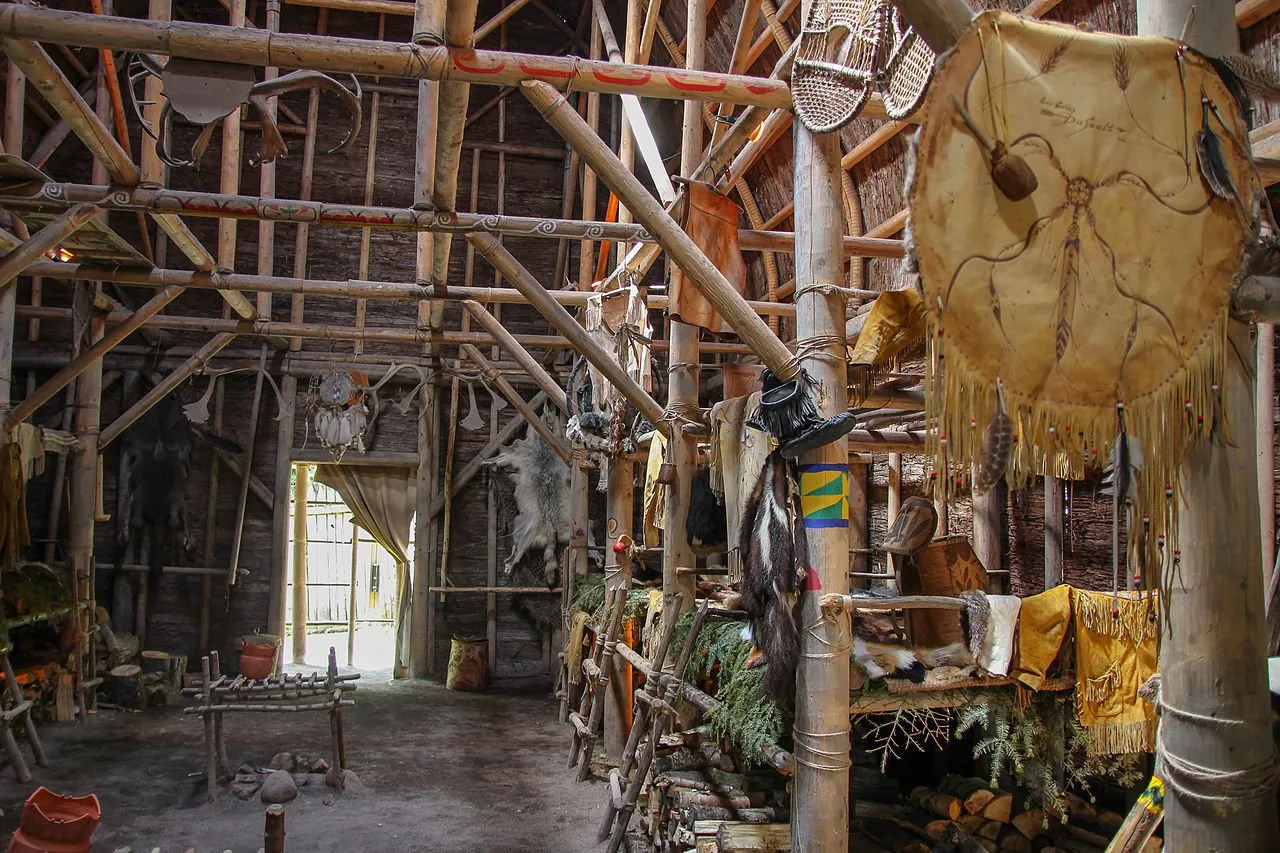
But by mid-century, Lewis Henry Morgan’s descriptions of the Six Nations of the Iroquois, among others, were widely published— and they made clear that the main economic institution among the Iroquois nations were longhouses where most goods were stockpiled and then allocated by women’s councils, and no one ever traded arrowheads for slabs of meat.
Economists simply ignored this and other living examples that didn't fit
Stanley Jevons, for example, who in 1871 wrote what has come to be considered the classic book on the origins of money, took his examples straight from Smith several hundred years before, with Indians swapping venison for elk and beaver hides...
and made no use of actual descriptions of Indian life that were easily available to him
Around that same time, missionaries, adventurers, and colonial administrators were fanning out across the world, many bringing copies of Smith’s book with them, expecting to find the land of barter. None ever did. They discovered an almost endless variety of economic systems. But to this day, no one has been able to locate a part of the world where the ordinary mode of economic transaction between neighbors takes the form of “I’ll give you twenty chickens for that cow.”

The definitive anthropological work on barter, by Caroline Humphrey, of Cambridge, could not be more definitive in its conclusions: “No example of a barter economy, pure and simple, has ever been described, let alone the emergence from it of money; all available ethnography suggests that there never has been such a thing.” Now, all this hardly means that barter does not exist— or even that it’s never practiced by the sort of people that Smith would refer to as “savages.” It just means that it’s almost never employed, as Smith imagined, between fellow villagers. Ordinarily, it takes place between strangers, even enemies.
Let us begin with the Nambikwara of Brazil.

They would seem to fit all the criteria: they are a simple society without much in the way of division of labor, organized into small bands that traditionally numbered at best a hundred people each. Occasionally if one band spots the cooking fires of another in their vicinity, they will send emissaries to negotiate a meeting for purposes of trade. If the offer is accepted, they will first hide their women and children in the forest, then invite the men of other band to visit camp. Each band has a chief; once everyone has been assembled, each chief gives a formal speech praising the other party and belittling his own; everyone puts aside their weapons to sing and dance together— though the dance is one that mimics military confrontation. Then, individuals from each side approach each other to trade:
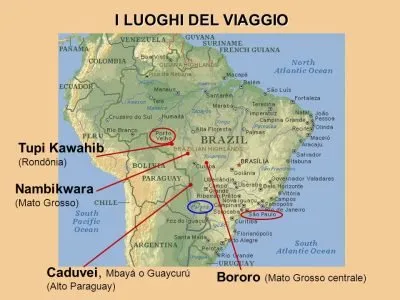
If an individual wants an object he extols it by saying how fine it is. If a man values an object and wants much in exchange for it, instead of saying that it is very valuable he says that it is no good, thus showing his desire to keep it. “This axe is no good, it is very old, it is very dull,” he will say, referring to his axe which the other wants. This argument is carried on in an angry tone of voice until a settlement is reached. When agreement has been reached each snatches the object out of the other’s hand. If a man has bartered a necklace, instead of taking it off and handing it over, the other person must take it off with a show of force.
Disputes, often leading to fights, occur when one party is a little premature and snatches the object before the other has finished arguing. The whole business concludes with a great feast at which the women reappear, but this too can lead to problems, since amidst the music and good cheer, there is ample opportunity for seductions. This sometimes led to jealous quarrels. Occasionally, people would get killed. Barter, then, for all the festive elements, was carried out between people who might otherwise be enemies and hovered about an inch away from outright warfare— and, if the ethnographer is to be believed— if one side later decided they had been taken advantage of, it could very easily lead to actual wars.
To shift our spotlight halfway around the world to Western Arnhem Land in Australia, where the Gunwinggu people are famous for entertaining neighbors in rituals of ceremonial barter called the dzamalag. Here the threat of actual violence seems much more distant.

Partly, this is because things are made easier by the existence of a moiety system that embraces the whole region: no one is allowed to marry, or even have sex with, people of their own moiety, no matter where they come from, but anyone from the other is technically a potential match. Therefore, for a man, even in distant communities, half the women are strictly forbidden, half of them fair game. The region is also united by local specialization: each people has its own trade product to be bartered with the others.
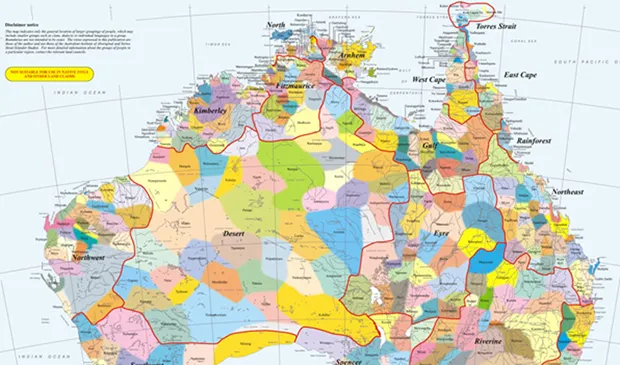
a map of aboriginal cultures in Australia
What follows is from a description of a dzamalag held in the 1940s, as observed by an anthropologist named Ronald Berndt. Once again, it begins as strangers, after some initial negotiations, are invited into the hosts’ main camp. The visitors in this particular example were famous for their “much-prized serrated spears”— their hosts had access to good European cloth. The trading begins when the visiting party, which consisted of both men and women, enters the camp’s dancing ground of “ring place,” and three of them began to entertain their hosts with music. Two men start singing, a third accompanies them on the didjeridu. Before long, women from the hosts’ side come and attack the musicians: Men and women rise and begin to dance.
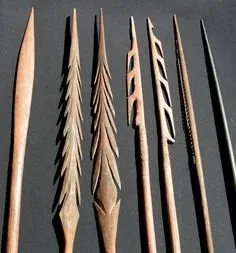
The dzamalag opens when two Gunwinggu women of the opposite moiety to the singing men “give dzamalag” to the latter. They present each man with a piece of cloth, and hit or touch him, pulling him down on the ground, calling him a dzamalag husband, and joking with him in an erotic vein. Then another woman of the opposite moiety to the pipe player gives him cloth, hits and jokes with him. This sets in motion the dzamalag exchange. Men from the visiting group sit quietly while women of the opposite moiety come over and give them cloth, hit them, and invite them to copulate; they take any liberty they choose with the men, amid amusement and applause, while the singing and dancing continue. Women try to undo the men’s loin coverings or touch their penises, and to drag them from the “ring place” for coitus. The men go with their dzamalag partners, with a show of reluctance, to copulate in the bushes away from the fires which light up the dancers.
They may give the women tobacco or beads. When the women return, they give part of this tobacco to their own husbands, who have encouraged them to go dzamalag. The husbands, in turn, use the tobacco to pay their own female dzamalag partners … New singers and musicians appear, are again assaulted and dragged off to the bushes; men encourage their wives “not to be shy,” so as to maintain the Gunwinggu reputation for hospitality; eventually those men also take the initiative with the visitors’ wives, offering cloth, hitting them, and leading them off into the bushes. Beads and tobacco circulate.
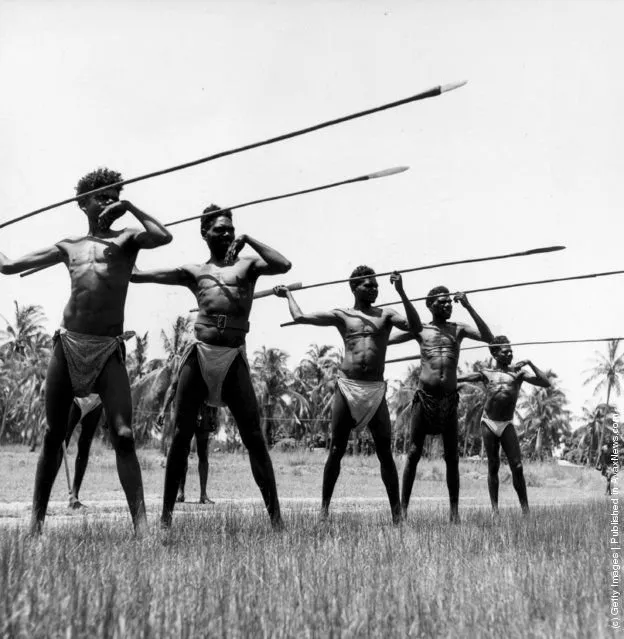
Finally, once participants have all paired off at least once, and the guests are satisfied with the cloth they have acquired, the women stop dancing and stand in two rows and the visitors line up to repay them. Then visiting men of one moiety dance towards the women of the opposite moiety, in order to “give them dzamalag.” They hold shovel-nosed spears poised, pretending to spear the women, but instead hit them with the flat of the blade. “We will not spear you, for we have already speared you with our penises.” They present the spears to the women. Then visiting men of the other moiety go through the same actions with the women of their opposite moiety, giving them spears with serrated points. This terminates the ceremony, which is followed by a large distribution of food.
This is a particularly dramatic case, but dramatic cases are revealing. What the Gunwinggu hosts appear to have been able to do here, owing to the relatively amicable relations between neighboring peoples in Western Arnhem Land, is to take all the elements in Nambikwara barter (the music and dancing, the potential hostility, the sexual intrigue), and turn it all into a kind of festive game— one not, perhaps, without its dangers, but (as the ethnographer emphasizes) considered enormous fun by everyone concerned. What all such cases of trade through barter have in common is that they are meetings with strangers who will, likely as not, never meet again, and with whom one certainly will not enter into any ongoing relations.
This is why a direct one-on-one exchange is appropriate: each side makes their trade and walks away. It’s all made possible by laying down an initial mantle of sociability, in the form of shared pleasures, music and dance— the usual base of conviviality on which trade must always be built. Then comes the actual trading, where both sides make a great display of the latent hostility that necessarily exists in any exchange of material goods between strangers— where neither party has no particular reason not to take advantage of the other— by playful mock aggression, though in the Nambikwara case, where the mantle of sociability is extremely thin, mock aggression is in constant danger of slipping over into the real thing. The Gunwinggu, with their more relaxed attitude toward sexuality, have quite ingeniously managed to make the shared pleasures and aggression into exactly the same thing.

Recall here the language of the economics textbooks: “Imagine a society without money.” “Imagine a barter economy.”
One thing these examples make clear is just how limited the imaginative powers of most economists turns out to be.
Why? The simplest answer would be: for there to even be a discipline called “economics,” a discipline that concerns itself first and foremost with how individuals seek the most advantageous arrangement for the exchange of shoes for potatoes, or cloth for spears, it must assume that the exchange of such goods need have nothing to do with war, passion, adventure, mystery, sex, or death.
Economics assumes a division between different spheres of human behavior that, among people like the Gunwinggu and the Nambikwara, simply does not exist.

The Story of Money
The Story of Money 1: Intro
The Story of Money 2: Work, Wage Labor
The Story of Money 3: The Myth of Barter
Next time, join us as we explore the deep history between Markets and Standing Armies!